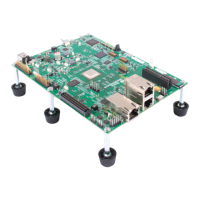Introduction
-
Style
and
Symbol
Conventions
1.3
Style
and
Symbol
Conventions
• In this document, program listings or examples, interactive displays,
filenames,
file contents, and symbol names
are
shown
in a
special
font.
Examples may use a
bold
version
of
the
special
font
for emphasis. Here is a sample declaration:
#include
<memory.h>
int
free(pointer)
char
*pointer;
Some examples
show
screen displays in the
special
font;
the part
of
the display that you enter
is
shown in the
bold
special
font.
In the
following
example, you enter the first line
to
invoke the parser; the next
three lines are messages that the parser prints
to
the screen.
gspcc
program
C
Compiler,
Version
3.xx
(c)
Copyright
1988,
Texas
Instruments
Incorporated
"program.c"
==>
main
• In syntax descriptions, the instruction, command, or directive
is
in a
bold
face
font.
Parameters
are
in italics. Here
is
an
example of directive
syntax:
#line
integer-constant
{"
filename"]
#line
is a preprocessor directive. This directive
has
two
parameters,
in-
dicated by integer-constant and "filename". When you use #Iine, the
first parameter must be
an
actual integer constant; the second parameter
must be the name
of
a file, enclosed in double quotes.
• Square brackets ( [ ] ) indicate
an
optional parameter. Here's
an
exam-
ple
of
a command that
has
three optional parameters:
gspcpp
[input
file
{output
file]]
{options]
Square brackets
are
also used
as
part
of
the pathname specification
for
VMS
path names; in this case, the brackets
are
actually part
of
the path-
name (they aren't optional).
1-5

